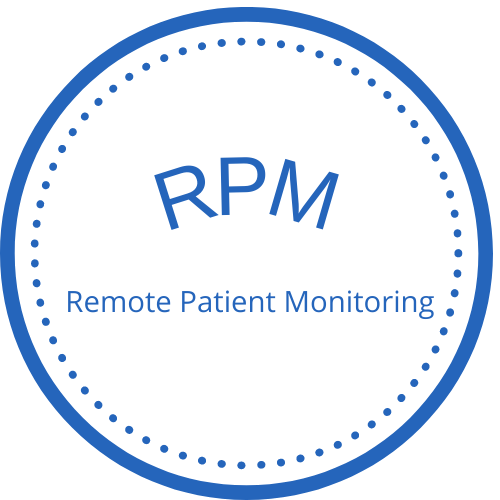- 72 hour eeg cpt code and billing - August 12, 2023
- Weight Loss Medical Doctor that does injections - February 4, 2023
- Digital Therapeutics Company - February 1, 2023
Pressure ulcers, also known as bedsores or pressure sores, are a significant concern in the context of medical and healthcare. As someone with a background in medical, health, wellness, healthcare, and a pro-life perspective, you likely have a strong interest in promoting patient well-being and preventing pressure ulcers.
The primary goals related to pressure ulcers include:
- Prevention: One of the main goals is to prevent the development of pressure ulcers in individuals who are at risk. This involves regular assessment of patients’ skin integrity, managing moisture, maintaining proper nutrition, and using supportive equipment like specialized cushions and mattresses.
- Early Detection: Timely identification of pressure ulcers is crucial to prevent their progression. Regular skin assessments and vigilance help catch pressure ulcers at their earliest stages when interventions are most effective.
- Wound Healing: For individuals who already have pressure ulcers, the goal is to promote effective wound healing. This involves providing appropriate wound care, managing infections, and creating an optimal healing environment.
- Pain Management: Pressure ulcers can be painful, and managing the pain associated with these wounds is essential for the patient’s comfort and quality of life.
- Patient Education: Educating patients, caregivers, and healthcare professionals about the causes, risk factors, and prevention strategies for pressure ulcers is crucial. Empowering individuals with knowledge can help reduce the incidence of these ulcers.
- Collaborative Care: Achieving pressure ulcer goals often requires a collaborative approach involving various healthcare professionals such as nurses, physicians, wound care specialists, dietitians, and more. Effective communication and coordination among the team members are essential.
- Improving Quality of Life: Ultimately, the overarching goal is to enhance the overall quality of life for individuals by preventing pressure ulcers or facilitating their healing. This aligns with your pro-life perspective and commitment to promoting well-being.
Remember, these goals are interconnected, and a holistic approach to medical care, wellness, and healthcare is crucial in achieving them.
The development of a care plan related to skin integrity can be challenging for any clinician. It takes a strong understanding of skin integrity risk factors and knowledge of how to modify, stabilize, and eliminate those risk factors. This article provides tips for the care-planning process.
Establish goals
A skin integrity care plan starts with a comprehensive risk assessment and skin inspection. (For more information, refer to What is a comprehensive risk assessment? in the May/June 2014 issue of Wound Care Advisor.)
Once the risk assessment is complete, all identified risk factors or skin concerns should be brought forward to the plan of care. Now it’s time to determine the goal. Ensure the goal is measurable; for example, “The skin will remain intact during the patient’s stay” or “The pressure ulcer on the coccyx will show signs of healing, such as a decrease in dimension size and filling in of the wound base in 2 weeks.”
You also want to ensure the goal is realistic. For example, you don’t want to state that an arterial wound with no circulation will heal in 3 months. Instead, your goal may be that the arterial wound will remain stable.
Select interventions
After you establish the goal, you’re ready to develop the interventions. Correlating the interventions to the identified risk factors is key, but given the multitude of possible interventions, this can seem overwhelming. One solution is to develop a suggestion sheet of potential interventions for common risk factors. For example, for the risk factor of immobility, potential interventions might include:
- pressure redistribution surface for the bed and wheelchair
- heel floats/heel-lift devices
- turning and repositioning program
- grab bars on the bed to promote mobility
- referral to physical therapy.
It’s important to understand the root cause of risk factors to help determine the appropriate intervention. For example, if the patient doesn’t want to turn and reposition because of pain (a risk factor that’s known to potentially reduce mobility), you would first need to provide pain relief.
Some risk factors, such as elimination problems secondary to urinary incontinence or nutrition deficit because of loss of taste, will require their own interventions. In this case, list the risk factor under skin integrity; then, under interventions, state “See elimination problem” or “See nutritional problem.” This will eliminate the risk of having conflicting interventions listed under two care-plan problems.
Make care planning less intimidating
Overall, the care-planning process can become less intimidating if you use a comprehensive risk tool with a suggestion sheet of goals and interventions to consider. Also, it’s imperative to ensure all interventions listed on the care plan that need to be implemented by the nursing assistant are clearly communicated and documented on the nursing assistant assignment sheet.
Jeri Lundgren is vice president of clinical consulting at Joerns in Charlotte, North Carolina. She has been specializing in wound prevention and management since 1990. Education vital for successful wound management



